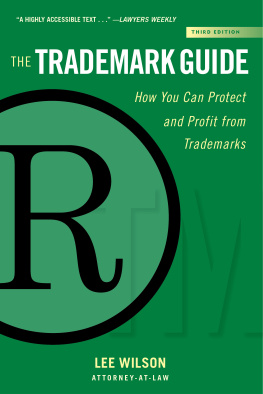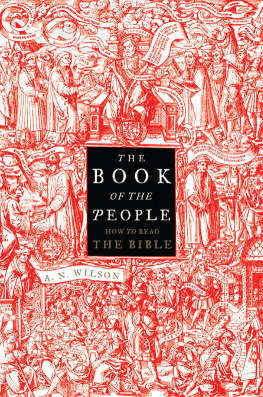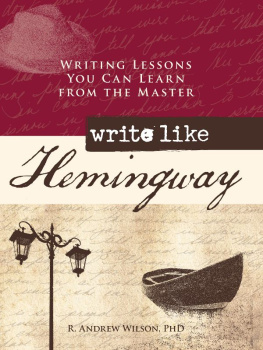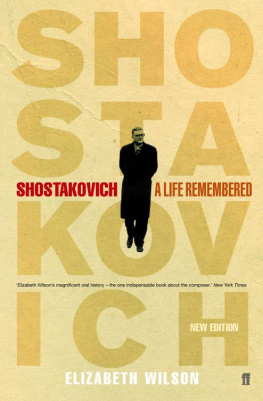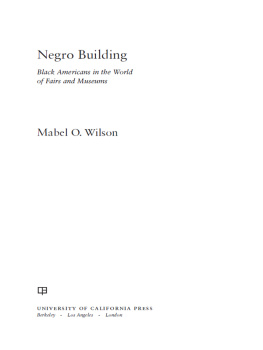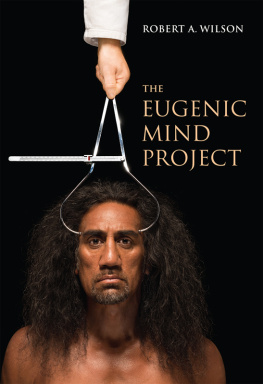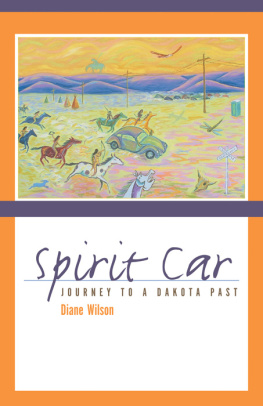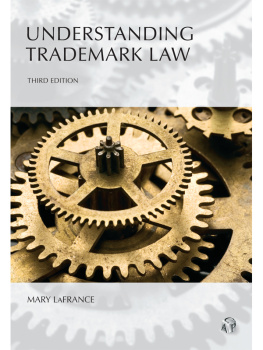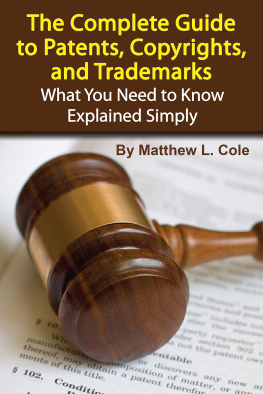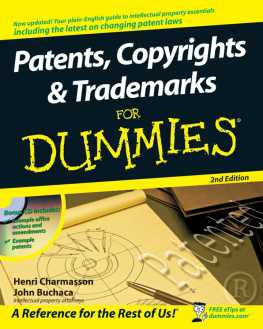Copyright 2018 by Linda Lee Wilson
All rights reserved. Copyright under Berne Copyright Convention, Universal Copyright Convention, and Pan American Copyright Convention. No part of this book may be reproduced, stored in a retrieval system, or transmitted in any form, or by any means, electronic, mechanical, photocopying, recording or otherwise, without the express written consent of the publisher, except in the case of brief excerpts in critical reviews or articles. All inquiries should be addressed to Allworth Press, 307 West 36th Street, 11th Floor, New York, NY 10018.
Allworth Press books may be purchased in bulk at special discounts for sales promotion, corporate gifts, fund-raising, or educational purposes. Special editions can also be created to specifications. For details, contact the Special Sales Department, Allworth Press, 307 West 36th Street, 11th Floor, New York, NY 10018 or .
22 21 20 19 18 5 4 3 2 1
Published by Allworth Press, an imprint of Skyhorse Publishing, Inc., 307 West 36th Street, 11th Floor, New York, NY 10018. Allworth Press is a registered trademark of Skyhorse Publishing, Inc., a Delaware corporation.
www.allworth.com
Cover design by Mary Belibasakis
Library of Congress Cataloging-in-Publication Data
Names: Wilson, Lee, 1951- author.
Title: The trademark guide: how you can protect and profit from trademarks / Lee Wilson, Attorney-at-Law.
Description: Third edition. | New York, New York: Allworth Press, an imprint of Skyhorse Publishing, Inc., [2018] | Includes index.
Identifiers: LCCN 2018001116 (print) | LCCN 2018010308 (ebook) | ISBN 9781621536338 (eBook) | ISBN 9781621536321 (hardcover: alk. paper)
Subjects: LCSH: Trademarks--Law and legislationUnited StatesPopular works.
Classification: LCC KF3180.Z9 (ebook) | LCC KF3180.Z9 W55 2018 (print) | DDC 346.7304/88dc23
LC record available at https://lccn.loc.gov/2018001116
Hardcover ISBN: 978-1-62153-632-1
eBook ISBN: 978-1-62153-633-8
Printed in the United States of America
Note: It is important to remember that although this book contains reliable information, the law changes, and interpretations of the law vary. No book can offer sufficient advice to guide anyone in a specific situation. Use the information in this book to educate yourself so that you can recognize when you have a problem. Then, ask a lawyer well versed in intellectual property law to advise you about your particular concerns if you feel that your own understanding of the law or skills for handling your problem are inadequate.
Dedication
This book is dedicated to my old friend and business partner Bill King, my favorite serial capitalist, whose accomplishments in the business world are proof that good ideas and hard work are rewarded in a free enterprise society.
Contents
Introduction
As more and more of the wealth of our country becomes embodied in intellectual property, it becomes increasingly important for businesspeople to grasp the basics of intellectual property law. Almost everyone has a hard time remembering the difference between the three major sorts of intellectual property: trademarks, copyrights, and patents. Trademarks are the subject of this book. Before you can completely understand trademarks, however, you need a passing knowledge of copyrights and patents. After we briefly distinguish trademarks from copyrights and patents, well consider trademarks in detail.
Although all three protect products of the human imagination, trademarks, copyrights, and patents are distinct but complementary types of intellectual property. Each is governed by a different federal law. The copyright and patent statutes both originate in Article I, Section 8, Clause 8 of the Constitution, which empowers Congress to Promote the Progress of Science and useful Arts, by securing, for limited Times to Authors and Inventors, the exclusive Right to their respective Writings and Discoveries. Our federal trademark statute originates in the commerce clause of the Constitution, which gives Congress the power to regulate interstate commerce. Only our federal government regulates copyrights; copyright registrations are granted by the Copyright Office, which is a department of the Library of Congress. Similarly, only the federal government can grant a patent. However, although the federal government grants trademark registrations, so do all fifty states. And for complicated reasons, the US Patent Office and the US Trademark Office are two halves of the same division of the Department of Commerce, called the United States Patent and Trademark Office.
Confused? It gets easier. In fact, the best way to understand copyrights, patents, and trademarks is to consider them together, in relation to each other.
COPYRIGHTS
A copyright is a set of rights that the copyright statute gives to the creators of artistic, literary, musical, dramatic, and audiovisual works. Only the person who created the copyrighted work is legally permitted to reproduce, perform, or display it, distribute copies of it, or create variations of it; any unauthorized exercise of any of these rights is called copyright infringement and is actionable in federal court.
Since January 1, 1978, in the United States, a copyright is created whenever a creator fixes in tangible form a work for which copyright protection is available. Under most circumstances, a copyright will endure until seventy years after the death of the creator of the copyrighted work; after copyright protection expires, a work is said to have fallen into the public domain and anyone is free to use it. Registration of a copyright enhances the rights that a copyright owner gains automatically by the act of creation, but is not necessary for copyright protection. The chief limitation on the rights of copyright owners is that copyright protects only particular expressions of ideas rather than the ideas themselves. This means that several people can create copyrightable works based on the same idea; in fact, there is no infringement no matter how similar one work is to another unless one creator copied anothers work.
(For more information about copyrights, see The Copyright Guide, Fourth Edition , by Lee Wilson, published by Allworth Press.)
PATENTS
A patent is a monopoly granted by the US Patent Office for a limited time to the creator of a new invention. In the language of the patent statute, any person who invents or discovers any new and useful process, machine, manufacture, or composition of matter, or any new and useful improvement thereof, may obtain a patent, subject to the conditions and requirements of the law.
According to the Patent Office,
A patent for an invention is the grant of a property right to the inventor, issued by the United States Patent and Trademark Office. Generally, the term of a new patent is 20 years from the date on which the application for the patent was filed in the United States or, in special cases, from the date an earlier related application was filed, subject to the payment of maintenance fees. US patent grants are effective only within the United States, US territories, and US possessions. Under certain circumstances, patent term extensions or adjustments may be available.
The right conferred by the patent grant is, in the language of the statute and of the grant itself, the right to exclude others from making, using, offering for sale, or selling the invention in the United States or importing the invention into the United States. What is granted is not the right to make, use, offer for sale, sell, or import, but the right to exclude others from making, using, offering for sale, selling, or importing the invention.

